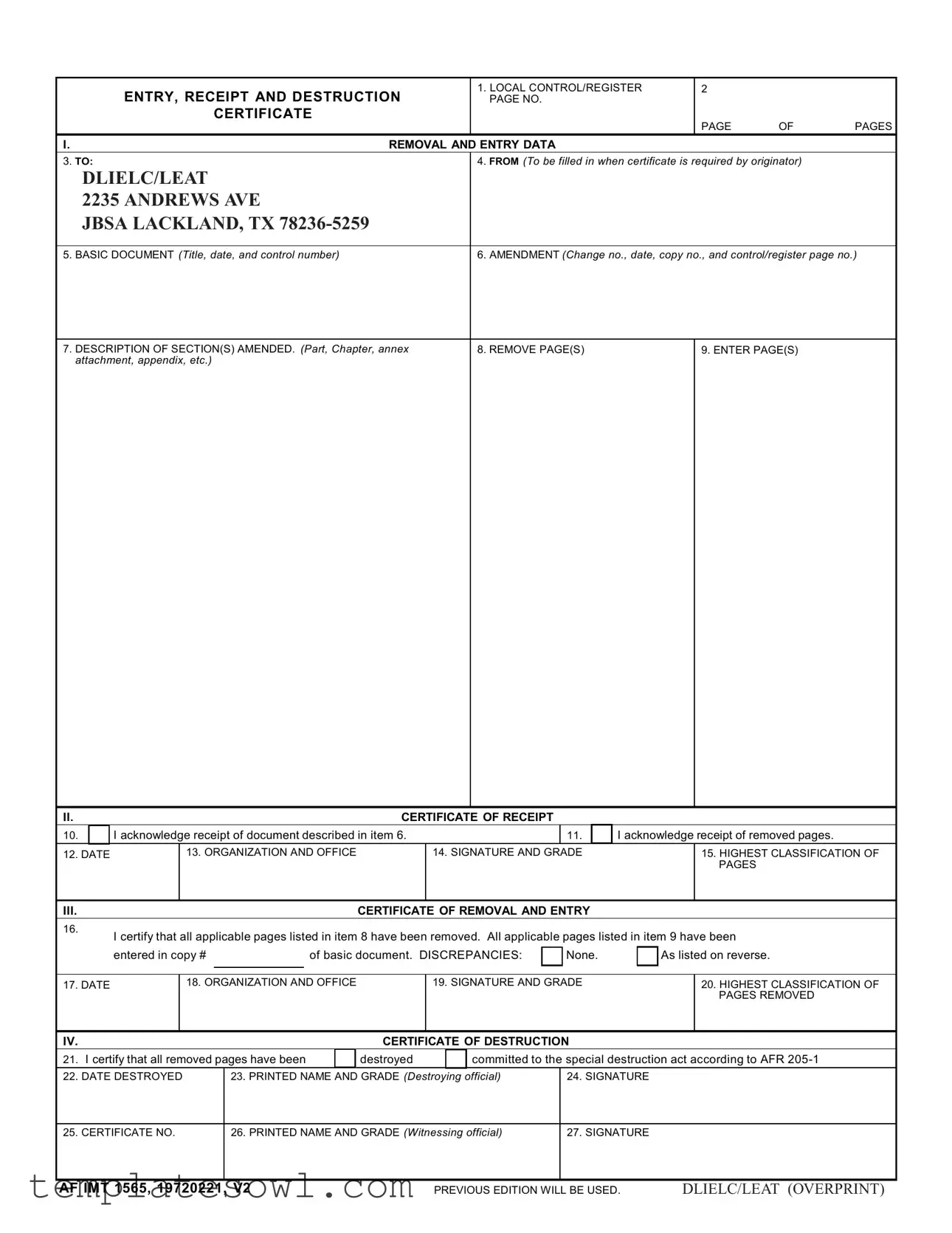What is the purpose of the AF IMT 1565 form?
The AF IMT 1565 form serves as a record-keeping tool for the removal, receipt, and destruction of sensitive documents within the U.S. military framework. It enables organizations to track changes made to documents, ensuring accountability and compliance with security protocols. The form includes sections for acknowledging receipt of documents, certifying their removal, and confirming their destruction. By utilizing this form, personnel can maintain an organized and secure approach to handling classified material.
Who is responsible for completing the AF IMT 1565 form?
The responsibility for completing the AF IMT 1565 form typically falls on individuals or offices involved in the management of classified documents. This includes personnel who create documents, those overseeing document storage, and individuals authorized to remove or destroy sensitive materials. Each person must provide their signature and grade, ensuring an official record of actions taken. The process underscores the importance of oversight and traceability in managing classified information.
What information is required on the AF IMT 1565 form?
The AF IMT 1565 form requires various pieces of important information. This includes the basic document title, amendment details, and the specific sections being amended or removed. It also requires acknowledgment of receipt for both new and removed pages, the date of these actions, and the highest classification level of the documents involved. These requirements ensure that all actions are documented thoroughly, providing a clear chain of custody for sensitive information.
What happens after the AF IMT 1565 form is completed?
Once the AF IMT 1565 form is completed, the relevant parties must retain it as a part of their records related to document management. For documents that have been removed or destroyed, this form acts as a formal certification of those actions, meeting compliance standards and security regulations. The completed form should be stored in a secure location, ensuring that there is always an accessible record of what has been handled. Failure to complete and retain this paperwork could lead to accountability issues in the future.

